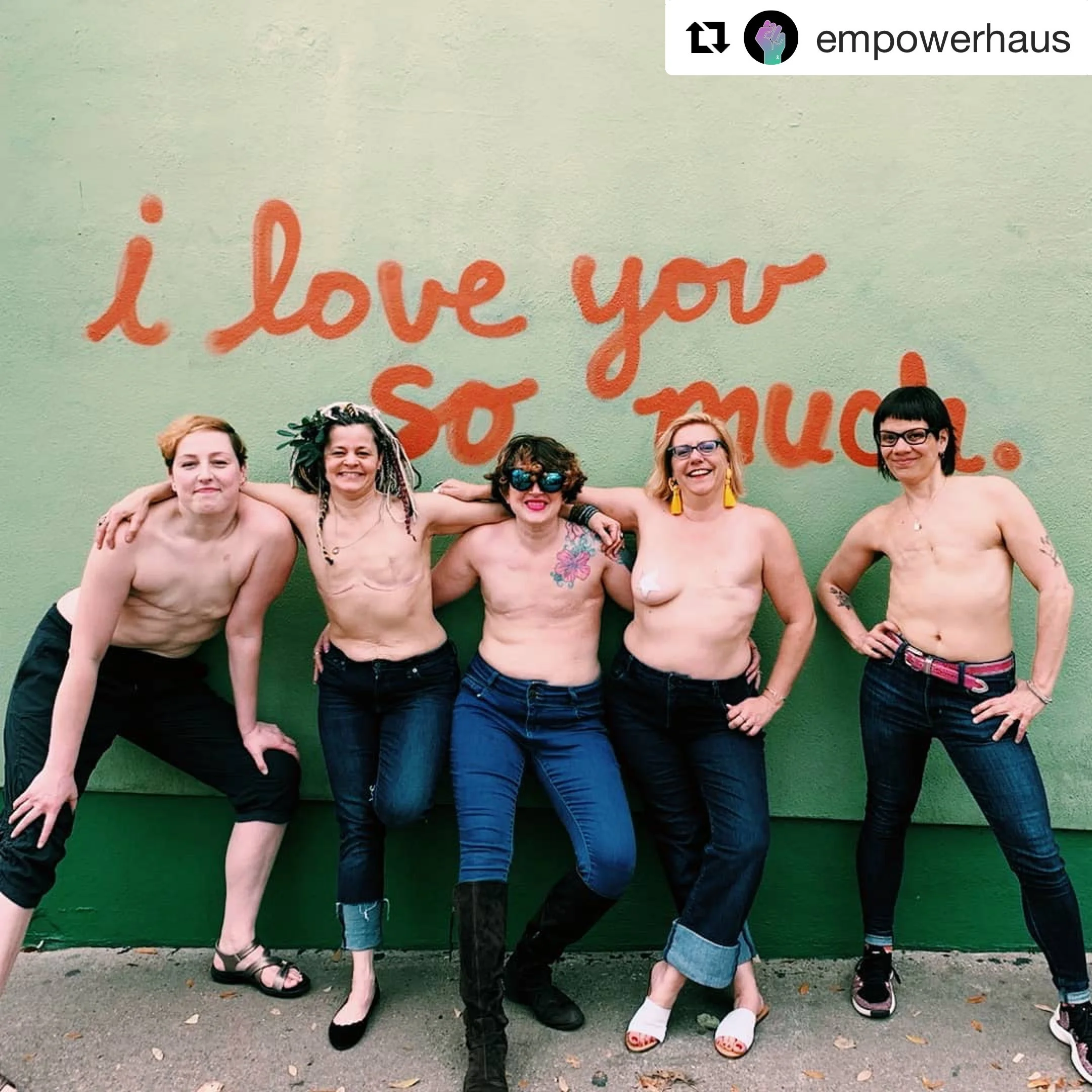Flat closure after reconstruction
It wasn’t easy making peace with going flat, but turning a f%$&*# up situation into magic has become my superpower over the last few years.
A year ago, I underwent explant surgery and aesthetic flat closure for the implant in my right breast, which was six-years-old and had proven to be problematic. This blog post is dedicated to celebrate that decision and help raise visibility about this option that’s gaining momentum in the breast cancer community.
Some background: I chose to have a unilateral (one-sided) mastectomy with immediate reconstruction when I was diagnosed with breast cancer in 2015. “Going flat” never came up as an option in my doctor’s office or in my research. Reconstruction sounded like the most logical and practical treatment plan. I was so focused on getting my body back to normal and looking like breast cancer had never happened to me.
In retrospect, that should’ve been my first red flag. It has been one of the hardest truths for me to accept after my diagnosis: there’s no getting back to the old Lindsey and for awhile, I was in denial of the changes my body was going through. I didn’t want it to be part of my identity.
Then in 2017, I was diagnosed a second time with a primary case of breast cancer. I went through radiation with my implant, which is typically is not part of protocol, but can be done when it’s already in place.
While in recovery, I met a badass group in the breast cancer community who called themselves flatties. Their sense of liberation, independent-thinking and support for one another was on another level when I get to see it first-hand at the Young Survival Coalition Summit in 2019.
They all said no to reconstruction and were implant-free. What a concept: to be so proud of your treatment decisions and have no problem letting the world know you were diagnosed with breast cancer. I wanted their confidence. Since I was already small-chested, I thought that perhaps someday I could make the choice myself.
Over time, radiation caused my implant to harden. It became super uncomfortable and it’s a wonder how I put up with it. I wanted my plastic surgeon to replace it, but the doctor wouldn’t. I trusted his opinion at the time. After living with the hard implant, known as capsular contracture, for three years, and learning via MRI in 2021 that my implant ruptured, I knew it was time for a major change.
I had heard enough horror stories about reconstruction: infected incisions, excess fluid causing swelling and requiring a vacuum pump, implant recalls due to breast implant illness and more. There’s also the fact that many patients go through revision surgeries. It can take multiple procedures to get the desired aesthetic result.
Then there’s the maintenance: The FDA has approved implants to last 10-20 years. As as a young woman who was diagnosed at 30 that leaves open the possiblity of multiple replacement surgeries. It also means annual visits to the plastic surgeon for monitoring. F%*@ that!
I didn’t want to face multiple surgeries to get my breasts symmetrical or risk infection over something that was aesthetic.
It took several months to schedule the procedure since I was now in the Canadian health system. I was a bit nervous because it was my first surgery in Canada since we moved from Southern California three years ago.
Thankfully surgery and recovery went smoothly. Emotionally, the first couple months were hard. It was a challenge seeing my right side flat. In fact it was beyond flat, it was concave because there was no breast tissue or implant to hold the skin in place. I had anticipated this possiblity under the advice of my doctor, but it’s a whole new thing when you can actually feel and see it.
Since explanting, my quality of life has improved drastically. I sleep better. I have more energy. I’m no longer conscious of daily discomfort in my right breast caused by the implant. I move my right arm with more ease. In retrospect, I’m in awe of how much discomfort I tolerated living with my implant. I didn’t realize how much it really bothered me until it was out.
One year later, I have no regrets about becoming a flattie.
In the past, I would’ve wasted too much time and energy worrying about all the things that are wrong with my body, but prioritizing my fitness and strength this past year has helped me focus on the positive. Now I’m learning how to define beauty on my terms and take pride in my scars and flatness like a person takes pride in their tattoos.
If you’re considering flat closure or explanting, some recommendations:
Talk to your surgeon about your aesthetic expectations. Bring in photos to help you explain your desired result.
If you sense your surgeon isn’t listening to what you want, get a second opinion. I had a horrible experience with the first plastic surgeon I met with in Canada. She disregarded my preference for flat closure and said it would “look ugly.”
Connect with flattie communities that resonate with you. Flat Closure Now was a great resource for me. For local information, I joined flattie Facebook groups based in Canada. After my nightmare first consultation, I found my plastic surgeon by asking for recommendations on the “Flat in Canada” Facebook group.


